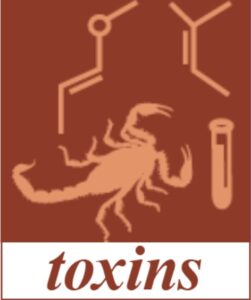Publications

Functional Effects of BoNT-A Application in Masseter Muscle in Patients with Symptoms of Bruxism
Authors: Krystian Matusz 1, Artur Druzdz 2,Natalie Gorna 3, Mariusz Glapinski 1, Malgorzata Galczynska-Rusin 3, Agata Czajka-Jakubowska 3, Michal Michalak 4, Agnieszka Przystanska 1
Affiliations:
- Department of Anatomy, Poznan University of Medical Sciences, 60-781 Poznan, Poland
- Department of Neurology, Municipal Hospital, 60-834 Poznan, Poland
- Department of Orthodontics and Temporomandibular Disorders, Poznan University of Medical Sciences, 60-781 Poznan, Poland
- Department of Computer Science and Statistics, Poznan University of Medical Sciences, 61-806 Poznan, Poland
Journal: Toxins - October 2025, Volume 17, Issue 11, Article no. 540 (DOI: 10.3390/toxins17110540)
-
Field & Applications:
- Medical
- Treatment evaluation
- Musculoskeletal disorder
- Temporomandibular disorder
- Orofacial muscles
Bruxism, defined as a repetitive jaw-muscle activity characterized by clenching or grinding of teeth and/or by bracing or thrusting of the mandible, is a prevalent behavior affecting up to 22% of adults worldwide. While traditionally viewed as a disorder, current understanding recognizes bruxism as a behavior that may have both positive and negative consequences. Objective assessment methods for evaluating the effectiveness of interventions in symptomatic patients remain limited.
This article presents the first longitudinal study using myotonometry to quantify changes in masseter muscle following botulinum toxin type A (BoNT-A) treatment in patients with symptoms of bruxism.
In total, 57 patients were recruited and their masseter muscle tone, stiffness, elasticity, relaxation time, and creep parameters were measured. Measurements were performed at baseline, 3 weeks, and 3 months post-injection during both rest and maximum voluntary contraction.
BoNT-A treatment produced significant improvements in all biomechanical parameters, with the greatest effects observed in patients with the highest baseline muscle values. The objective biomechanical changes correlated with the duration of BoNT-A’s therapeutic effects.
These findings establish myotonometry as a valuable tool for objective assessment of masticatory muscle function and demonstrate that BoNT-A produces measurable, long-lasting biomechanical changes in masseter muscle parameters, supporting its possible clinical application in this challenging condition.
Keywords: incobotulinumtoxinA, masticatory muscles
Key Contribution: Myotonometry is a valuable tool for objective assessment of masticatory muscle function and BoNT-A produces measurable, long-lasting biomechanical improvements in patients with bruxism.
This study provides evidence that there are objective measurable biomechanical changes in masseter muscle properties in patients with bruxism-related masticatory muscle symptoms after BoNT-A treatment.
While objective changes in muscle parameters measured by MyotonPRO may provide evidence of BoNT-A’s effect, the clinical efficacy of this treatment would be more convincingly demonstrated through randomized controlled trials (RCTs). Future researchers should prioritize the correlation between biomechanical improvements and patient-reported symptom relief, as this relationship is not fully understood. Identifying patient subgroups that may benefit most from BoNT-A treatment is an important direction for future research, which should also adopt validated assessment tools such as the STAB, stratify patients according to bruxism phenotypes (sleep vs. awake, grinding vs. bracing), and evaluate combined therapeutic strategies addressing both muscular and psychosocial aspects of this complex condition.
In conclusion, the greatest effects were observed in individuals with the highest baseline measurements, where the intervention was both more substantial and longer-lasting. These findings suggest that BoNT-A may be particularly beneficial for patients with severe masticatory muscle symptoms and elevated baseline masseter activity. Nevertheless, treatment decisions should be guided by the presence of negative consequences rather than the bruxism behavior alone.


